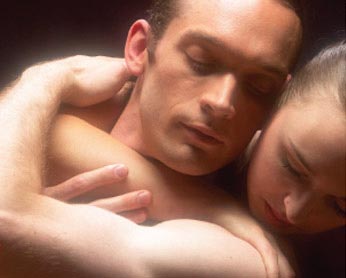Ephemera: Minnesota Dance Theater
Lightsey Darst went to see the Minnesota Dance Theater at the Pantages, and it inspired thoughts about the nature of the form itself.


Today I went to see Minnesota Dance Theatre’s fall concert—that is, I went to the ballet.
Ballet: the word strikes fear into the hearts of many cultured persons. Why? I’ve often heard ballet’s conservatism cited as a point against it. A ballet company, particularly a repertory ballet company like MDT, is inherently a conservative institution. Performing works first performed in other places and other times, a repertory ballet preserves the gestures and thoughts of the past.
Sometimes the nostalgia is gentle, as in Loyce Houlton’s starry 1969 ballet 293.6, inspired by that year’s moon landing—other times more jolting, as in Sir Frederick Ashton’s 1931 ballet Façade, with its burlesque of various national dances (including those of the US).
Ballet is an old form, its basic structures codified many years ago, and those basic structures reflect longstanding ideals of Western culture—nobility, upward aspiration, grace among women and strength among men, truth and beauty making one whole—ideals that many no longer trust. There are the details our modern eyes snag on: the thin bodies, the pointe shoes, women manipulated by men, etc. And the presentational nature of ballet bothers many avant-gardists: “Here I am,” the dancer seems to say, “executing a particularly difficult step, now I am done, applaud!” It’s so old, that way of making art, and we’ve all moved on to art that creeps off-stage, that never winds up anything, that puts the burden on the viewer.
And yet. I could point out qualifications to all of the above, exceptions, openings—but even take all that for granted and I still see a “yet”. What ballet gives you is a world of beauty. But at the heart of the beauty is something else. For whatever the beauty as it goes on may try to make us think, nothing is at all eternal in this world. The dancer who jumps must come down, the dancer who spins must stop. The power that pushes dancers along through these astonishing maneuvers is a power that rises in youth and decreases with age. So the dancer who seems to be saying “Here I am!” is in fact saying “Here I am, but not for long! Catch me while you can.”
Take the solo given to Melanie Verna in Joanie Shapiro’s Caitlyn, Sam and Mel: the anguish that drives this luscious dance is never specified, and doesn’t need to be. It’s an eternal argument of youth and death. (In this dance the moment is more poignant because Caitlyn, Sam and Mel is a new version of The Portrait Project, which was originally created for other dancers. But in diluted form this poignancy haunts all repertory.)
I always get that “Here I am, but not for long!” feeling in spades from MDT. The youth of the performers, the long history of the company, the high polish each dance invariably receives, as if everyone involved desperately needed the success of the piece, even the little frowny faces the dancers make when they’ve missed a step—it all adds up to the frustrating, lovely, heartbreaking soul of ballet.
For the most part the dancers here are young, not mature in their talent; overall this cuts down the expressive potential of the company, but it actually increases the poignancy, at least for local audiences. MDT’s getting to be such a talent farm that I can’t help wondering which dancer I’m seeing for the last time here (goodbye, Raina Gilliland, goodbye, Andrea Bergeman, goodbye, Shane Tice). Is it charismatic Caitlyn Fitzpatrick, saucy Elayna Waxse, splendid Melanie Verna? At least we can keep Sam Feipel—right? His tall form filling out the boxlike space of the Pantages, he looks better than ever this year, his interaction with the audience more confident, his technique clearer.
The dances deserve more than the footnote they’re getting here, particularly the two revivals of Loyce Houlton’s work, Boccherini Dances and 293.6. These works bear Balanchine’s influence in their angular lines, inventive partnering, attentive ear to the music, and stage geometries, but they also testify to Houlton’s ability to turn this influence into engaging whole pieces (which is more than can be said for some contemporary ballet choreographers). And they testify to her ambition, which has outlived her time on stage—a cheering counterpoint to the eternal transience of the ballet.